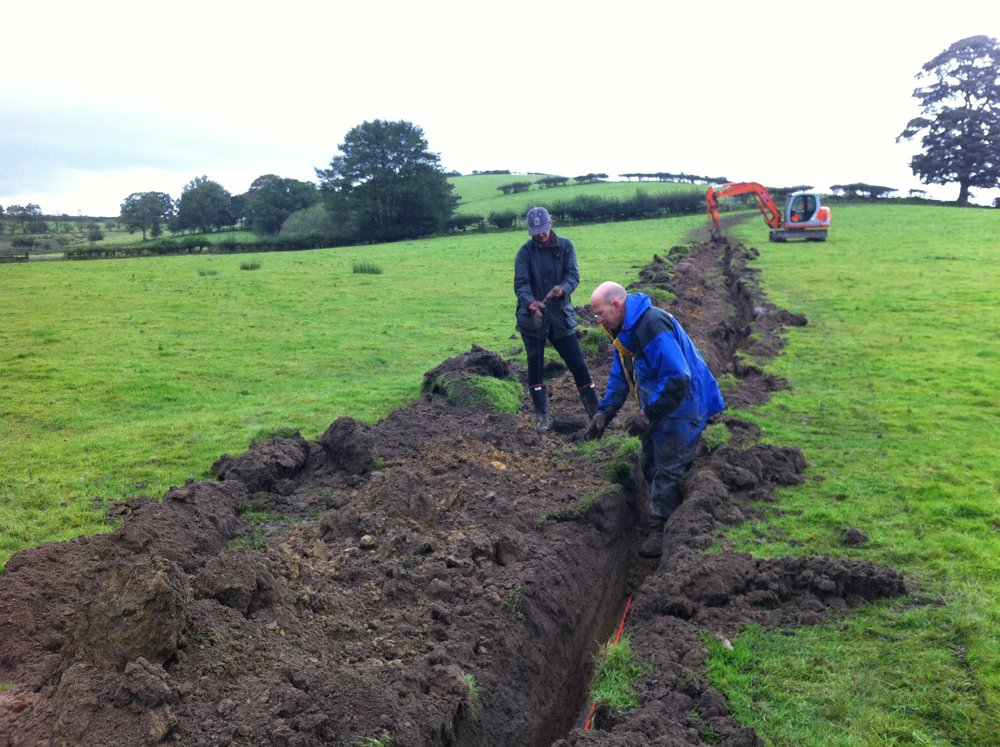Living in a rural area shouldn’t mean compromising high-speed internet access. While the challenges of obtaining broadband in rural areas are unique, there are solutions available that can help bridge the digital divide. This ultimate guide aims to provide you with a comprehensive overview of the various options and tips for getting broadband in rural areas. If you want a quick solution get in touch with Notspot Broadband today and we will endeavour to find the best solution for you!
Understanding the Challenges of broadband in rural areas
To tackle the issue effectively, it’s essential to understand the challenges specific to rural broadband access. Limited infrastructure, long distances between properties, and low population density often make it economically unviable for traditional broadband providers to offer services in these areas. Recognizing these challenges is the first step towards finding suitable solutions. You can read more about the challenges of getting broadband in rural areas from this blog post by Free Price Compare.
a. Limited Infrastructure: One of the primary challenges in rural areas is the limited or nonexistent broadband infrastructure. Traditional broadband providers often prioritise urban or densely populated regions due to higher return on investment. As a result, rural areas are left with outdated or inadequate infrastructure, making it challenging to bring high-speed internet access to these regions.
b. Long Distances and Low Population Density: The geographic dispersion and low population density in rural areas present significant hurdles for broadband deployment. The cost of laying physical cables over long distances to serve fewer customers can be prohibitive for providers. The sparsity of potential subscribers can make it financially unviable for traditional providers to invest in expanding their networks to rural locations.
c. Terrain and Environmental Factors: Rural areas often feature challenging terrain, such as mountains, valleys, or dense forests. These natural obstacles can complicate the installation and maintenance of broadband infrastructure, making it logistically demanding and costly. Harsh weather conditions, including heavy rainfall, snow, or strong winds, can further impact the stability and reliability of broadband connections.

d. Affordability and Return on Investment: From a business perspective, the economics of providing broadband in rural areas can be challenging. The lower population density and potential difficulties in recouping infrastructure costs can discourage traditional providers from extending their services. This lack of market viability can result in limited options and higher costs for residents seeking broadband access.
e. Regulatory and Policy Barriers: Regulatory and policy frameworks can also pose challenges in rural broadband access. Licensing requirements, permits, and regulations related to infrastructure deployment can slow down the implementation process and increase costs. Addressing regulatory barriers and fostering a conducive policy environment is crucial for facilitating broadband expansion in rural areas.
Understanding these challenges helps set realistic expectations and informs the search for viable solutions. By recognizing the unique obstacles faced in rural broadband access, individuals, communities, and policymakers can work together to develop strategies that address these challenges and improve connectivity in rural areas.
Satellite Internet for Broadband in Rural Areas
Satellite internet is a promising solution for bringing broadband to rural areas where traditional wired connections are impractical. It utilizes satellites positioned in geostationary or low-Earth orbit (LEO) to provide internet access. Notable among satellite internet providers is Starlink, operated by SpaceX.
- Geostationary Satellite Internet: These satellites remain fixed in space approximately 22,000 miles above the Earth’s equator. While they offer wide coverage, there can be higher latency due to the signal’s distance.
- Low-Earth Orbit (LEO) Satellite Internet: LEO satellites, like Starlink, are positioned at lower altitudes, reducing latency and improving signal quality. Starlink aims to provide global broadband coverage with a vast network of interconnected satellites.
Starlink, led by SpaceX, aims to revolutionize rural connectivity. However, availability may vary by location as it is still in the early stages of deployment. You can read more about how Starlink works here.

Satellite internet, including Starlink, provides wide coverage to rural areas with limited infrastructure. Consider factors like latency and equipment costs. As technology advances and more providers enter the market, satellite internet’s quality and availability are expected to improve.
Fixed Wireless Solutions
Fixed wireless broadband offers a reliable and cost-effective option for delivering high-speed internet access to rural areas. By utilizing radio signals between a base station and a fixed antenna on the user’s property, fixed wireless can quickly deploy internet services without extensive infrastructure requirements. This scalability allows for wide coverage, reaching homes, businesses, and educational institutions in rural communities. With advancements in technology, fixed wireless networks now provide faster speeds and improved reliability, making them suitable for bandwidth-intensive activities like streaming and online gaming.
Fixed wireless solutions offer the following advantages:
- Quick Deployment: Fixed wireless can be set up rapidly, providing faster access to broadband services compared to traditional wired connections.
- Lower Infrastructure Costs: By eliminating the need for extensive cabling, fixed wireless significantly reduces infrastructure expenses, making it cost-effective for rural areas with limited resources.
- Wide Coverage: Strategic placement of base stations allows fixed wireless networks to reach a broad area, providing reliable connectivity to a significant number of users.
- Improved Performance: Advancements in wireless transmission protocols and equipment contribute to faster speeds and enhanced reliability, ensuring a seamless online experience for rural users.
It’s important to consider factors such as terrain, line of sight, and distance when assessing the feasibility and suitability of fixed wireless solutions in specific rural locations
Community-Driven Initiatives
Community-driven initiatives play a vital role in bringing broadband access to rural areas where traditional providers may not reach. By fostering collaboration among local residents, businesses, and organizations, these initiatives empower communities to take control of their connectivity and implement their own broadband solutions. Here are key points to consider:
- Grassroots Collaboration: In community-driven initiatives, individuals and organizations come together to address the broadband needs of their area. They pool resources, knowledge, and expertise to build networks that provide reliable internet access.
- Cooperative Models: Cooperative models have proven successful in many community-driven broadband projects. These models involve community members becoming shareholders or subscribers, collectively contributing to the funding and operation of the network.
- Last-Mile Connectivity: Community initiatives often focus on providing last-mile connectivity, which refers to the final leg of delivering broadband from the main network to individual households or businesses. By solving this crucial piece of the connectivity puzzle, communities can bridge the digital divide and unlock economic and educational opportunities.
- Local Partnerships: Community initiatives often leverage partnerships with local organizations, such as nonprofits, municipal governments, or educational institutions. These partnerships bring together the resources, expertise, and funding necessary to plan, implement, and sustain broadband projects.
- Grants and Funding: Various grants and funding opportunities exist to support community-driven initiatives. Governments, foundations, and private organizations provide financial assistance to help communities establish their broadband networks. Researching and applying for these grants can significantly aid in the success of community-driven projects.
Community-driven initiatives have the potential to transform rural connectivity by ensuring broadband access tailored to the unique needs of each community. By working together, rural residents can overcome the challenges of limited infrastructure and build networks that connect and empower their communities.
Notspot Broadband for Broadband in Rural Areas
Mastband is NotSpot’s continually evolving fibre-beating solution. It uses the backbone of the UK’s masts which covers 98% of the UK landmass. Mastband brings ultra-fast, low-latency alternative broadband to areas where standard broadband just can’t reach. Bringing fibre-beating speeds into your home with no new phone line or huge dishes, just a small antenna on your wall and a modem in your house.
You can read more about Domestic Mastband as well as Business Mastband.
If you need broadband we will work tirelessly to come up with the perfect solution to meet your needs.

Overcoming the digital divide and gaining access to high-speed broadband in rural areas is now within reach, thanks to solutions provided by Notspot Broadband. By understanding the unique obstacles and exploring the available options, individuals and communities can bridge the connectivity gap. This ultimate guide, brought to you by Notspot Broadband, offers a comprehensive overview of satellite internet, fixed wireless solutions, community-driven initiatives, tips for maximizing connectivity, and funding opportunities. By implementing these strategies, rural areas can achieve reliable and fast broadband access, empowering residents and businesses to thrive in the digital age with the support of Notspot Broadband.
